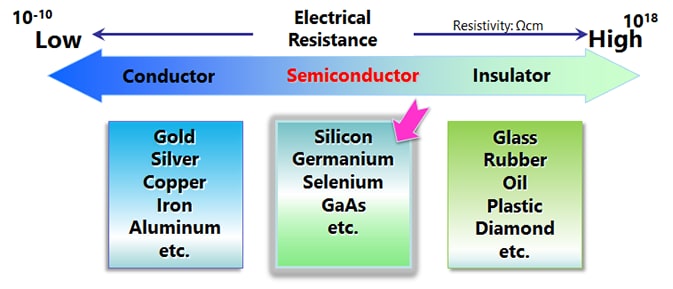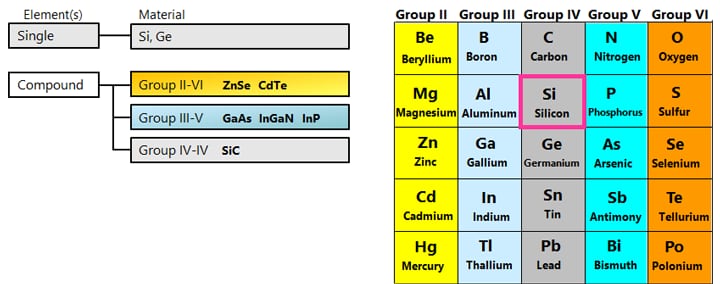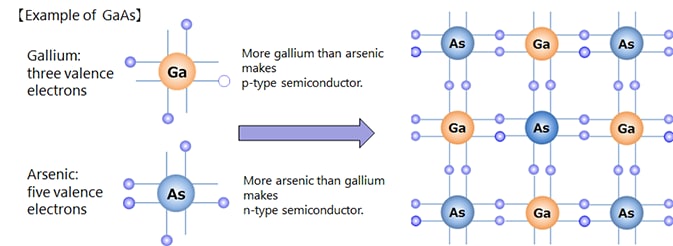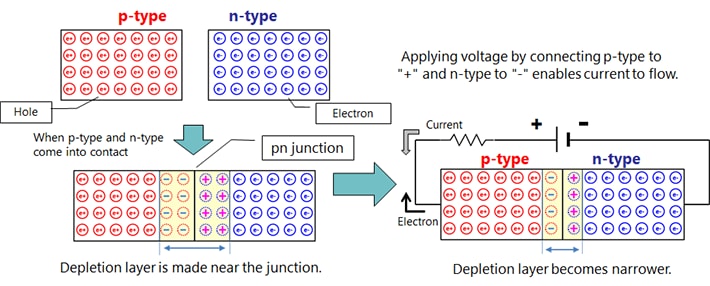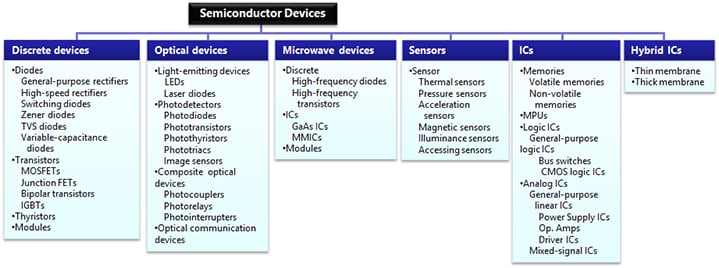- General Top
- SEMICONDUCTOR
- STORAGE
- COMPANY
-
My ToshibaSemicon
- Semiconductor Top
-
ApplicationsAutomotive
Body Electronics
xEV
In-Vehicle Infotainment
Advanced Driver-Assistance Systems (ADAS)
Chassis
IndustrialInfrastructure
BEMS/HEMS
Factory Automation
Commercial Equipment
Consumer/PersonalIoT Equipment
Healthcare
Wearable Device
Mobile
Computer Peripherals
-
ProductsAutomotive Devices
Discrete Semiconductor
Diodes
Transistors
Logic ICs
Analog Devices
Digital Devices
Wireless Devices
※
: Products list (parametric search)
Power SemiconductorsSiC Power Devices
※
: Products list (parametric search)
Isolators/Solid State RelaysPhotocouplers
Digital Isolators
Solid State Relays
Fiber Optic Transmitting Modules
※
: Products list (parametric search)
MOSFETsIGBTs/IEGTsBipolar Transistors※
: Products list (parametric search)
Diodes※
: Products list (parametric search)
MicrocontrollersMotor Driver ICsIntelligent Power ICs※
: Products list (parametric search)
Power Management ICsLinear ICs※
: Products list (parametric search)
General Purpose Logic ICsLinear Image SensorsOther Product ICsOther Product ICs
※
: Products list (parametric search)
-
Design & Development
-
Knowledge
- Where To Buy
- Part Number & Keyword Search
- Cross Reference Search
- Parametric Search
- Stock Check & Purchase
This webpage doesn't work with Internet Explorer. Please use the latest version of Google Chrome, Microsoft Edge, Mozilla Firefox or Safari.
require 3 characters or more. Search for multiple part numbers fromhere.
The information presented in this cross reference is based on TOSHIBA's selection criteria and should be treated as a suggestion only. Please carefully review the latest versions of all relevant information on the TOSHIBA products, including without limitation data sheets and validate all operating parameters of the TOSHIBA products to ensure that the suggested TOSHIBA products are truly compatible with your design and application.Please note that this cross reference is based on TOSHIBA's estimate of compatibility with other manufacturers' products, based on other manufacturers' published data, at the time the data was collected.TOSHIBA is not responsible for any incorrect or incomplete information. Information is subject to change at any time without notice.
require 3 characters or more.
n-type Semiconductor
Download "Chapter I : Basis of Semiconductors" (PDF:1.2MB)
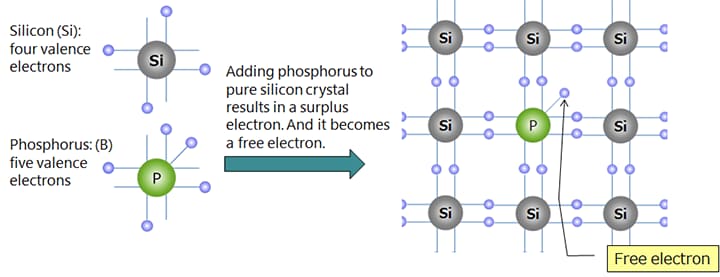
An n-type semiconductor is a group IV intrinsic semiconductor such as silicon (Si) doped with group V elements such as phosphorus (P), arsenic (As), or antimony (Sb) as an impurity.
Group IV elements are tetravalent elements with four valence electrons, while group V elements are pentavalent elements with five valence electrons. A single crystal made only of tetravalent elements such as Si is bound to other elements by covalent bonds, and has no excess electrons or holes. This state without impurities is an intrinsic semiconductor. When a small amount of phosphorus is added to this single crystal (diffusion/doping), one of the valence electrons of the phosphorus becomes an excess electron that can move freely (free electron). When a voltage is applied, this free electron is attracted to the positive electrode and moves, causing a current to flow. For this reason, the resistivity of n-type semiconductors (and p-type semiconductors described below) decreases as the impurity concentration increases.
Si and impurities such as P that make up n-type semiconductors are electrically neutral as single atoms. Therefore, n-type semiconductors are also electrically neutral. However, in n-type semiconductors, the particles (carriers) that carry the charge are free electrons. These carriers have a negative charge, which is why they are called n-type.
* This free electron is the carrier of an n-type semiconductor.
Chapter I : Basis of Semiconductors
Related information
- Products
- FAQ
